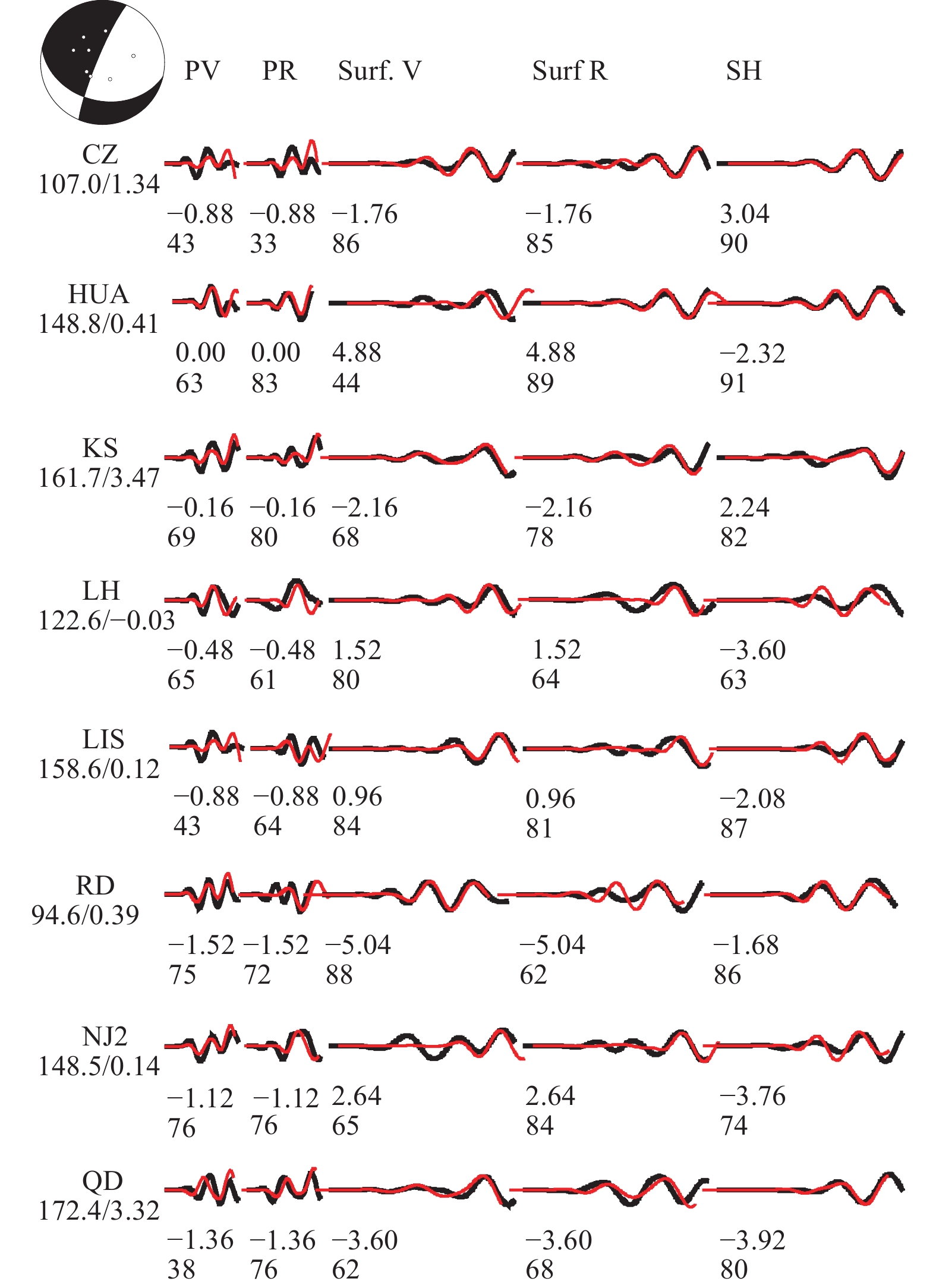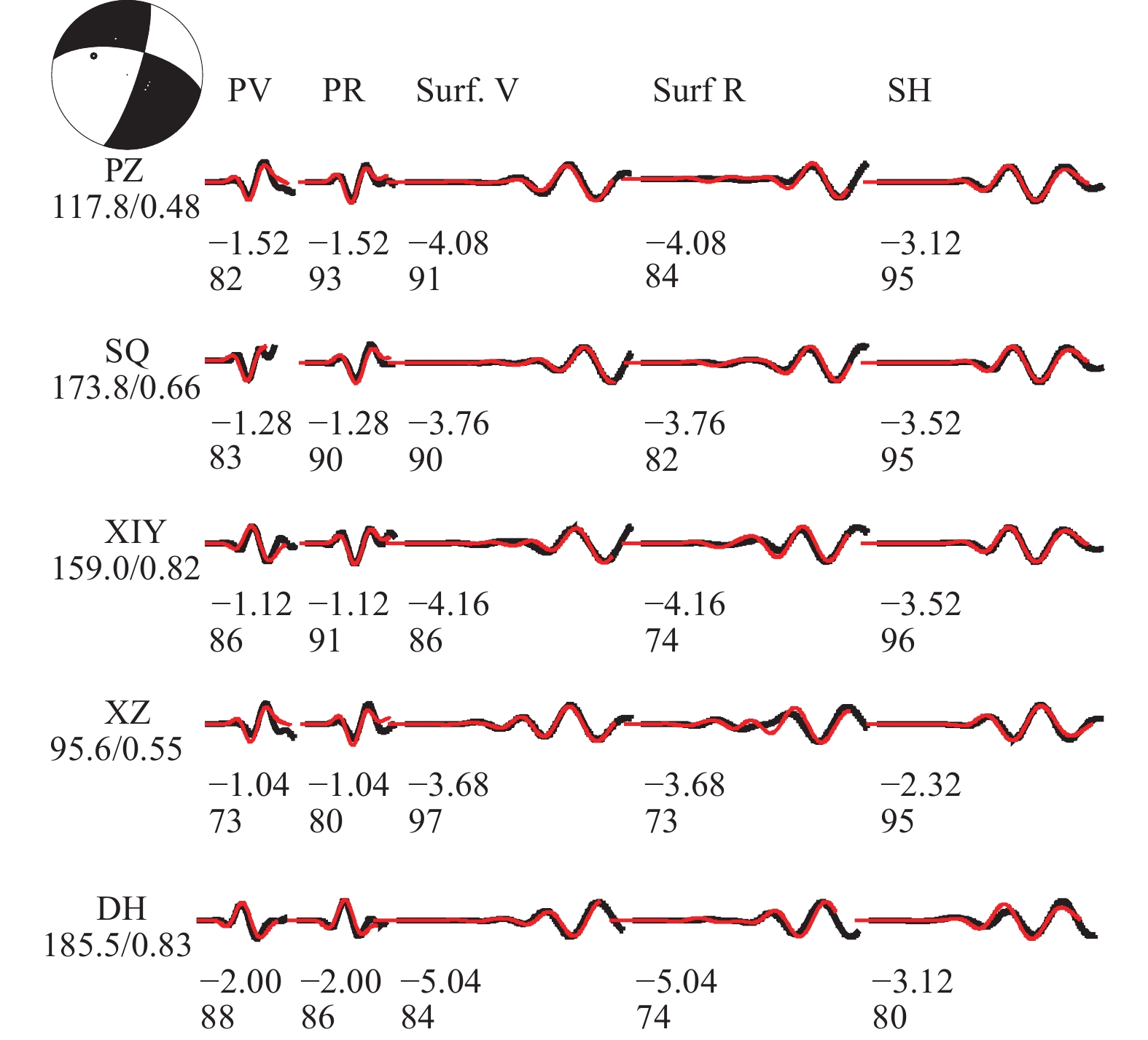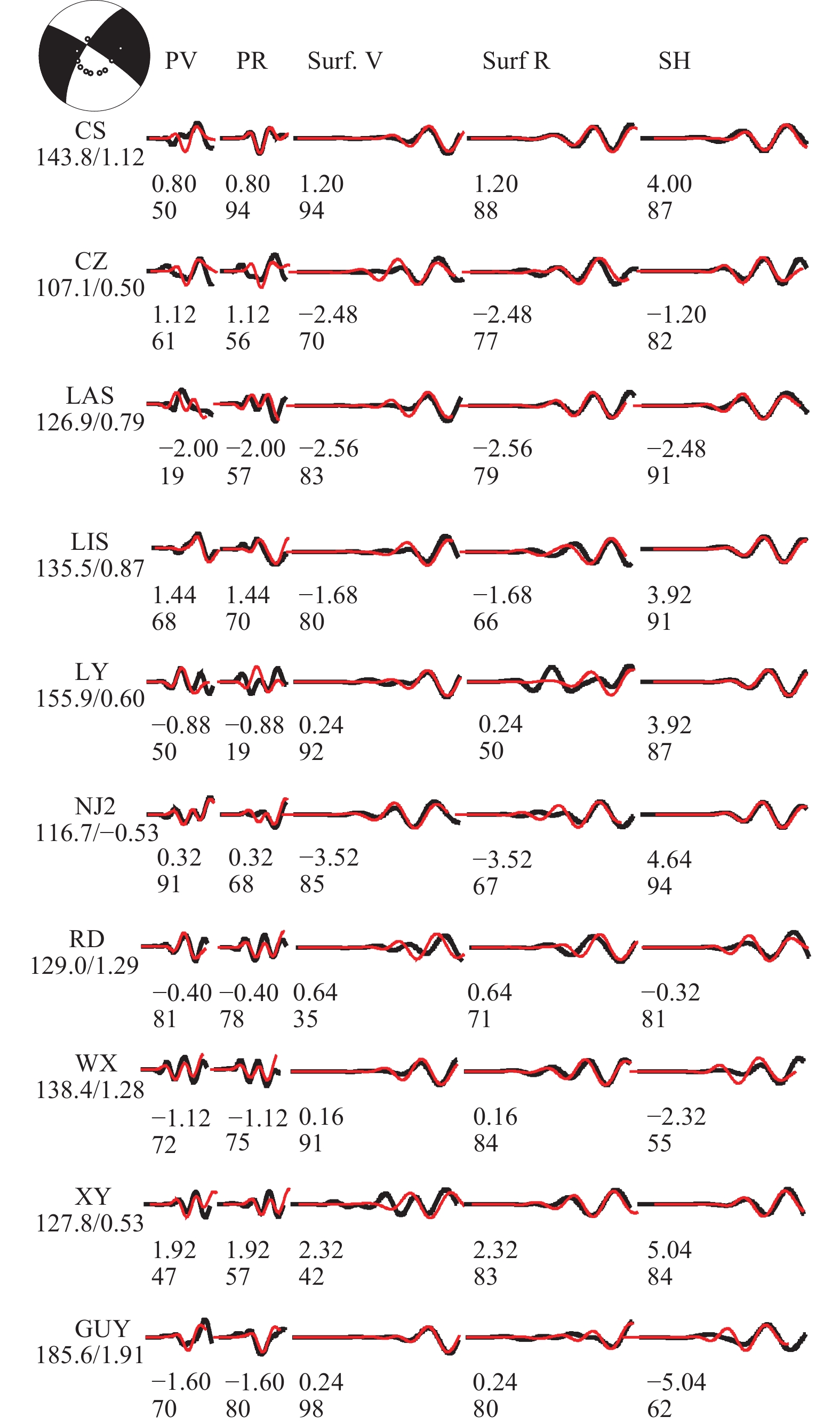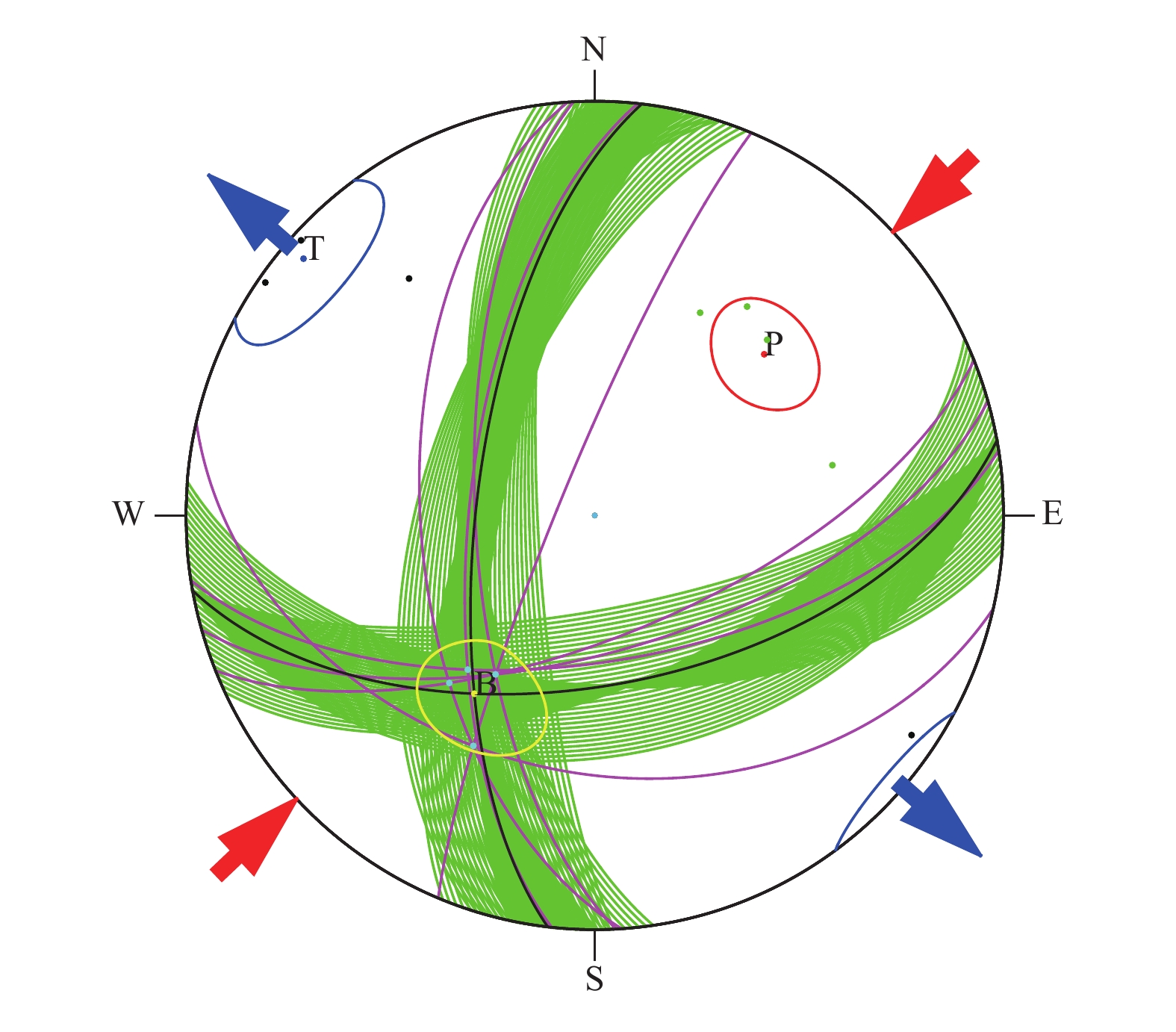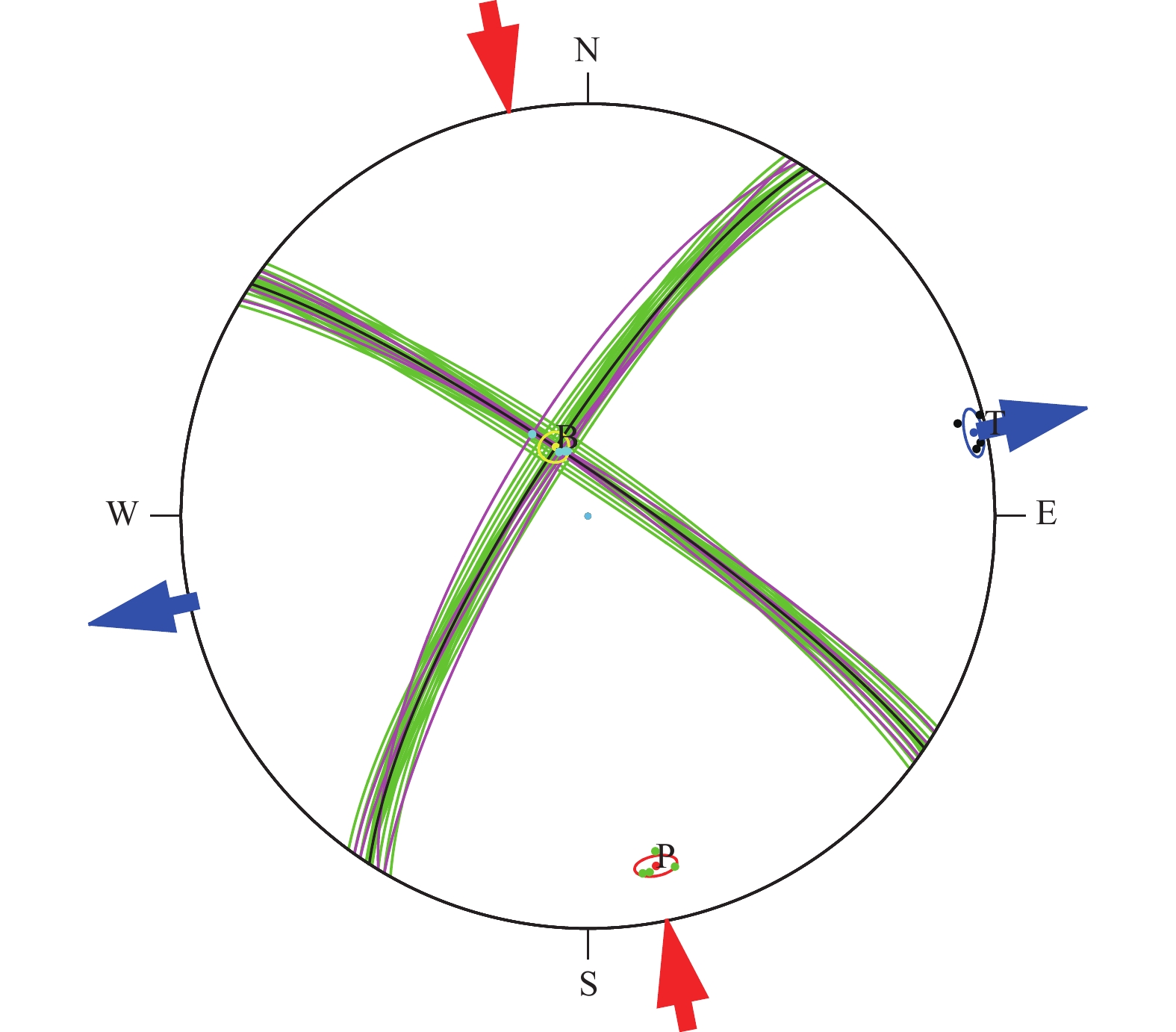Analysis of the Accuracy of Focal Mechanism Solutions for M3.0 Earthquakes with Different Methods
-
摘要: 本文采用TDMT_INV、FOCMEC和CAP 3种方法对网缘、网外和网内地震震源机制解进行计算,并对3种方法所得结果进行对比分析。研究发现,TDMT_INV方法的结果稳定性高度依赖于震相准确性,但只需5个台站参与定位即可获得相对准确的震源机制解。对于网外地震,3种方法都无法反演稳定的震源机制解;对于网缘地震,CAP方法受台站分布的影响较大,使用时需谨慎。若波形质量好、信噪比高,可使用FOCMEC方法进行计算,若无清晰的P波初动可使用TDMT_INV方法进行计算;对于网内地震3种方法所得结果较为一致,但TDMT_INV方法可快速获得震源机制解。
-
关键词:
- 震源机制解 /
- TDMT_INV方法 /
- CAP方法 /
- FOCMEC方法
Abstract: In this study, we employed the TDMT_INV, FOCMEC, and CAP methods to calculate the focal mechanism solutions for earthquakes with magnitudes greater than 3, focusing on events at the edge of the seismic network, outside the network, and within the network. We then compared the results obtained from these three methods. The stability of the TDMT_INV method is significantly affected by the accuracy of seismic phase data; however, reliable focal mechanism solutions can be achieved when at least five stations are involved in the event location. None of the methods consistently produce stable focal mechanism solutions for earthquakes occurring within the seismic network. For network-edge events, the CAP method is highly sensitive to station distribution and should be applied with caution. The FOCMEC method can be used for calculation when waveform quality is high and the signal-to-noise ratio is favorable. In cases where the P-wave onset is unclear, the TDMT_INV method is recommended. Overall, the results for intra-network earthquakes from the three methods are relatively consistent, with the TDMT_INV method providing quick focal mechanism solutions.-
Key words:
- Focal mechanism solution /
- TDMT_INV method /
- CAP method /
- FOCMEC method
-
表 1 东台M3.0地震震源机制解
Table 1. The focal mechanism solution results of the Dongtai M3.0 earthquake
方法 走向/° 倾角/° 滑动角/° TDMT_INV方法(2个人工标注台站波形震相) 158 87 177 TDMT_INV方法(5个人工标注台站波形震相) 68 66 −39 TDMT_INV方法(所有人工标注台站波形震相) 74 63 −27 CAP方法 103 38 −12 FOCMEC方法 81 61 −29 表 2 微山M3.2地震震源机制解
Table 2. The focal mechanism solution results of the Weishan M3.2 earthquake
方法 走向/° 倾角/° 滑动角/° TDMT_INV方法(2个人工标注台站波形震相) 263 77 −162 TDMT_INV方法(5个人工标注台站波形震相) 265 89 −161 TDMT_INV方法(所有人工标注台站波形震相) 266 88 −166 CAP方法 282 62 −13 FOCMEC方法 293 66 −21 表 3 江都M3.1地震震源机制解
Table 3. The focal mechanism solution results of the Jiangdu M3.1 earthquake
方法 走向/° 倾角/° 滑动角/° TDMT_INV方法(2个人工标注台站波形震相) 214 89 −3 TDMT_INV方法(5个人工标注台站波形震相) 215 78 −7 TDMT_INV方法(所有人工标注台站波形震相) 214 79 −8 CAP方法 211 72 −8 FOCMEC方法 210 80 −9 表 4 东台M3.0地震震源机制解及中心震源机制解
Table 4. The focal mechanism solution results and central focal mechanism of the Dongtai M3.0 earthquake
序号 方法 震源机制解走向/°、
倾角/°、滑动角/°作为初始解得到的中心震源机制
走向/°、倾角/°、滑动角/°作为初始解得到
标准差S/°中心震源机制与其他震源机制的
最小空间旋转角/°1 TDMT_INV方法
(5个人工标注台站波形震相)68、66、−39 79.50、56.27、−28.92 15.411978 14.72 2 TDMT_INV方法
(所有人工标注台站波形震相)74、63、−27 79.53、56.24、−28.93 15.411980 9.52 3 CAP方法 103、38、−12 79.55、56.26、−28.91 15.411939 24.86 4 FOCMEC方法 81、61、−29 79.55、56.26、−28.91 15.411938 4.97 表 5 江都M3.1地震震源机制解及中心震源机制解
Table 5. The focal mechanism solution results and central focal mechanism of the Jiangdu M3.1 earthquake
序号 机构 震源机制解节面
Ⅰ走向/°、倾角/°、滑动角/°作为初始解得到的中心震源
机制节面Ⅰ走向/°、
倾角/°、滑动角/°作为初始解得到
标准差S/°中心震源机制与其他震源
机制的最小空间旋转角/°1 TDMT_INV方法
(5个人工标注台站波形震相)215、78、−7 212.47、 77.22、−7.99 3.731334 2.63 2 TDMT_INV方法
(所有人工标注台站波形震相)214、79、−8 212.46、 77.23、 −8.00 3.731370 2.35 3 CAP方法 211、72、−8 212.47、 77.20、 −8.03 3.731732 5.42 4 FOCMEC方法 210、80、−9 212.45、77.22、 −8.02 3.731664 3.73 -
杜航,郑江蓉,江昊琳等,2022. 利用FOCMEC和CAP方法反演2021年大丰海域 M 5.0及天宁 M 4.2地震震源机制解. 防灾减灾工程学报,42(4):874−880.Du H., Zheng J. R., Jiang H. L., et al., 2022. Inversion for the focal mechanisms of the 2021 Dafeng Sea M 5.0 earthquake and Tianning M 4.2 earthquake using FOCMEC and CAP methods. Journal of Disaster Prevention and Mitigation Engineering, 42(4): 874−880. (in Chinese) 关鹏虎,李斌,李自红等,2022. 多方法求解中小地震震源机制解的可靠性分析−−以山西地震带3次中小地震为例. 太原理工大学学报,53(2):289−298.Guan P. H., Li B., Li Z. H., et al., 2022. Reliability of focal mechanism solutions for small and medium earthquakes based on different methods−taking three events in Shanxi seismic belt as examples. Journal of Taiyuan University of Technology, 53(2): 289−298. (in Chinese) 刘泽民,黄显良,倪红玉等,2015a. 2014年4月20日霍山 M S4.3地震发震构造研究. 地震学报,37(3):402−410.Liu Z. M., Huang X. L., Ni H. Y., et al., 2015a. Seismogenic structure of the 20 April 2014 Huoshan M S4.3 earthquake in Auhui region. Acta Seismologica Sinica, 37(3): 402−410. (in Chinese) 刘泽民,倪红玉,张炳等,2015b. 基于FOCMEC方法反演震源机制解的交互式程序研制与使用. 华北地震科学,33(1):19−24.Liu Z. M., Ni H. Y., Zhang B., et al., 2015b. The development and manual of interactive program inversing Focal mechanism with interactive FOCMEC method. North China Earthquake Sciences, 33(1): 19−24. (in Chinese) 孙业君,黄耘,刘泽民等,2021. 郯庐断裂带鲁苏皖段及邻区构造应力场特征及其动力学意义. 地震地质,43(5):1188−1207.Sun Y. J., Huang Y., Liu Z. M., et al., 2021. Characteristics of tectonic stress field and dynamic significance in the Shandong-Jiangsu-Anhui segment of Tancheng-Lujiang fault zone and its adjacent areas. Seismology and Geology, 43(5): 1188−1207. (in Chinese) 孙业君,黄耘,刘泽民等,2022. 日本 M W9.0地震前后郯庐断裂带中南段构造应力场动态变化特征. 地球物理学报,65(6):2124−2136.Sun Y. J., Huang Y., Liu Z. M., et al., 2022. Dynamic variation characteristics of tectonic stress field in the middle-southern segment of Tan-Lu fault zone before and after the 2011 Tohoku-Oki M W9.0 earthquake. Chinese Journal of Geophysics, 65(6): 2124−2136. (in Chinese) 万永革,2019. 同一地震多个震源机制中心解的确定. 地球物理学报,62(12):4718−4728.Wan Y. G., 2019. Determination of center of several focal mechanisms of the same earthquake. Chinese Journal of Geophysics, 62(12): 4718−4728. (in Chinese) Chapman C. H., Leaney W. S., 2012. A new moment-tensor decomposition for seismic events in anisotropic media. Geophysical Journal International, 188(1): 343−370. doi: 10.1111/j.1365-246X.2011.05265.x Dreger D. S., Helmberger D. V., 1993. Determination of source parameters at regional distances with three-component sparse network data. Journal of Geophysical Research: Solid Earth, 98(B5): 8107−8125. doi: 10.1029/93JB00023 Zhao L. S., Helmberger D. V., 1994. Source estimation from broadband regional seismograms. Bulletin of the Seismological Society of America, 84(1): 91−104. Zhu L. P., Helmberger D. V., 1996. Advancement in source estimation techniques using broadband regional seismograms. Bulletin of the Seismological Society of America, 86(5): 1634−1641. doi: 10.1785/BSSA0860051634 -




 下载:
下载:

